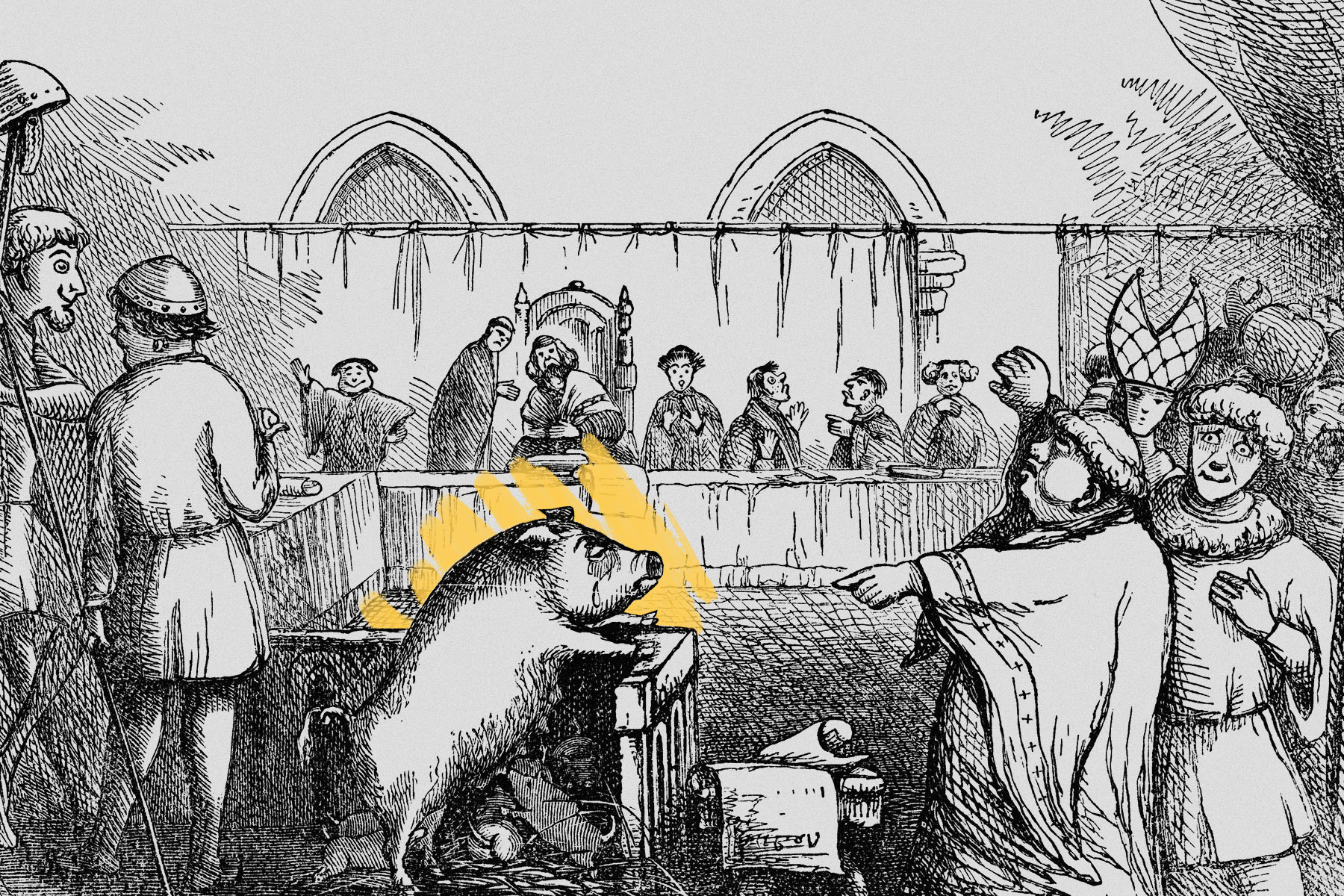Animals could be put on trial in medieval Europe.
In Europe during the Middle Ages, crime and punishment were often theatrical, with crowds gathering to witness executions and public humiliations. But what they witnessed wasn’t always a human trial — often, medieval courts meted out justice on animals. France kept the most extensive records of these trials, but they were also held in Switzerland, Germany, and occasionally Italy and Spain. There were two main types of medieval animal trials: secular trials, usually against one animal or a small group of animals, and religious proceedings on a group of pests, such as mice or locusts. The idea of animals on trial may seem whimsical now, but these were deadly serious affairs, with the same judges, executioners, and expenses of a human trial.
A surprisingly large number of the single-animal trials were pigs that had committed violence against human children. In one 1457 case in Savigny, France, a sow was accused of killing a 5-year-old child with her own six piglets tagging along. Her owner was accused only of negligence, but the pig was sentenced to death. Because the court could not prove their involvement, the piglets were spared. As for the mass trials in ecclesiastical courts, the local bishop (or someone from his staff) would typically appoint a human proxy for the accused pests. This person would have the impossible task of telling the accused to show up for their court date. In one case, a group of flies failed to appear and the court took pity on them for their small size and young age and assigned them different counsel. As part of the proceedings, a judge would hold one member of the species and tell it to leave. If it left, the community would give thankful prayers. If it stayed, the judge would excommunicate the pests from the church, and start organizing people to help rid them from the area.







